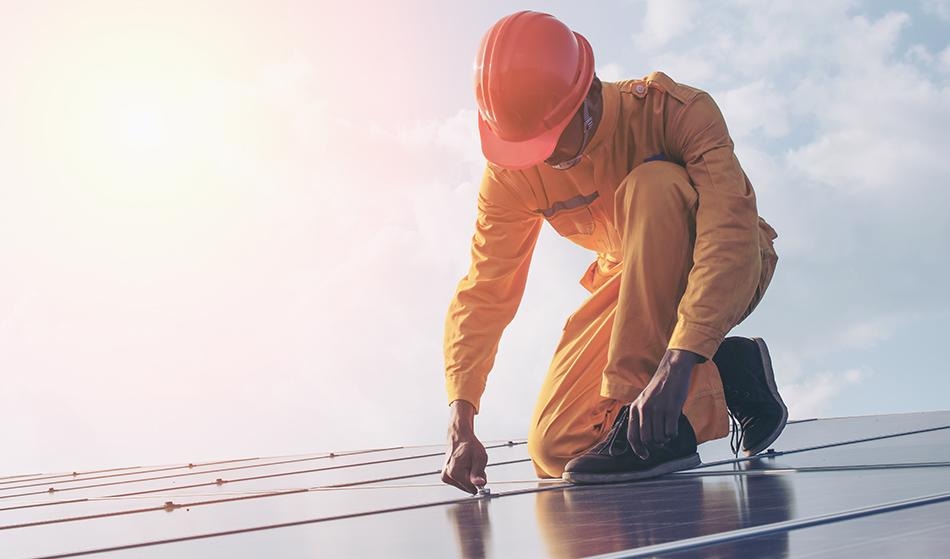
palidachan / Shutterstock
Clean energy technologies have been getting a lot of attention as a result of concerns about energy independence and the environmental impacts of fossil fuels.
Given these concerns, building integrated photovoltaic (BIPV) systems have drawn more and more interest in recent years, as they are a useful source of renewable power for building managers looking to responsibly address their energy needs.
BIPV Systems—Dual-Purpose Construction Materials
Compared to single-purpose photovoltaic panels, BIPV systems are dual-purpose construction materials: They function as both the exterior of a building and a producer of power, which can be used on-site, stored for later use or sent to the grid. BIPVs can offer savings in materials costs, electricity costs, as well as lower pollution and add to aesthetic appeal. While photovoltaics can be attached to an already-built structure, BIPV systems can realize significant value by being included in the original building design. Including photovoltaics during the initial construction phase can lower the overall cost of PV systems, as well as get rid of costs and design issues associated with mounting panels.
While BIPV systems are planned during the design phase and are included during construction of the building itself, building-added PV (BAPV) are dual-purpose photovoltaic materials integrated through a retrofit. BIPV and BAPV systems don't have the mounting racks of conventional PV systems. Designers of these systems should think about a range of solar technologies and how each technology could meet the needs of the building and its occupants. For instance, translucent, thin-film PV can permit natural lighting to enter and thermal systems can capture solar heat energy to produce hot water, or heating-and-cooling functionality.
Ecological and Structural Aspects
Two major considerations for getting the most out of a BIPV system are the ecological and structural aspects, both of which affect the economics, look and overall functionality of the system.
One ecological factor is insolation, which is the average amount of daily solar radiation an area receives. Climate factors must also be considered, as high average temperatures can reduce the production of solar systems, while long stretches of cloud and rainfall can impact both system output and maintenance needs. Other factors include any shading that can block the sun and latitude of the location.
A main structural factor to look into is the overall energy needs of the building. BIPV or BAPV system should be designed based on whether the building can function outside the electrical grid, which would call for on-site energy storage. Cost factors and aesthetics should also be considered when designing a system.
Applications
Now, BIPV solutions still represent a relatively small percentage of the PV market, primarily as a result of the myth that BIPV integrations are more costly than customary roof installations. However, there is currently a niche market that continues to open for the following applications:
Façade - When photovoltaics are integrated into the façade of a building, glass windows are replaced with semi-transparent thin-film or crystalline solar panels. Facade systems have less exposure to direct sunlight than rooftop systems but normally provide a bigger surface area. In retrofit applications, photovoltaics can be used to fix an unattractive or degraded exterior.
A standard façade system is designed to allow outside air to enter from the bottom and leave out of the top. During this sequence, the airflow absorbs heat generated by photovoltaics, lowering their temperature, which leads to an improvement in efficiency and lifespan. In some systems, a fan system is used to draw air heated by photovoltaics into the building to reduce the load on a conventional heating system. These systems that convert solar energy both electrically and thermally are known as building-integrated photovoltaic-thermal (BIPVT) systems.
Rooftop – BIPV systems can be used to replace roofing materials or, in some instances, the roof entirely. Some producers of these systems can provide a single-piece solar rooftop created using laminated glass. There are also solar “shingles” available that can be used in place of standard roof shingles.
Glazing – Ultra-thin solar panels may be used to produce semi-transparent surfaces that permit daylight to pass through while concurrently producing electricity. These are often used to make skylights or greenhouses with photovoltaic capabilities.
Sources
Disclaimer: The views expressed here are those of the author expressed in their private capacity and do not necessarily represent the views of AZoM.com Limited T/A AZoNetwork the owner and operator of this website. This disclaimer forms part of the Terms and conditions of use of this website.